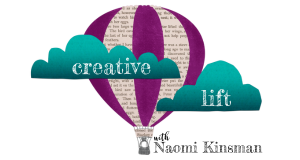by Naomi | Nov 21, 2016 | Teaching Strategies
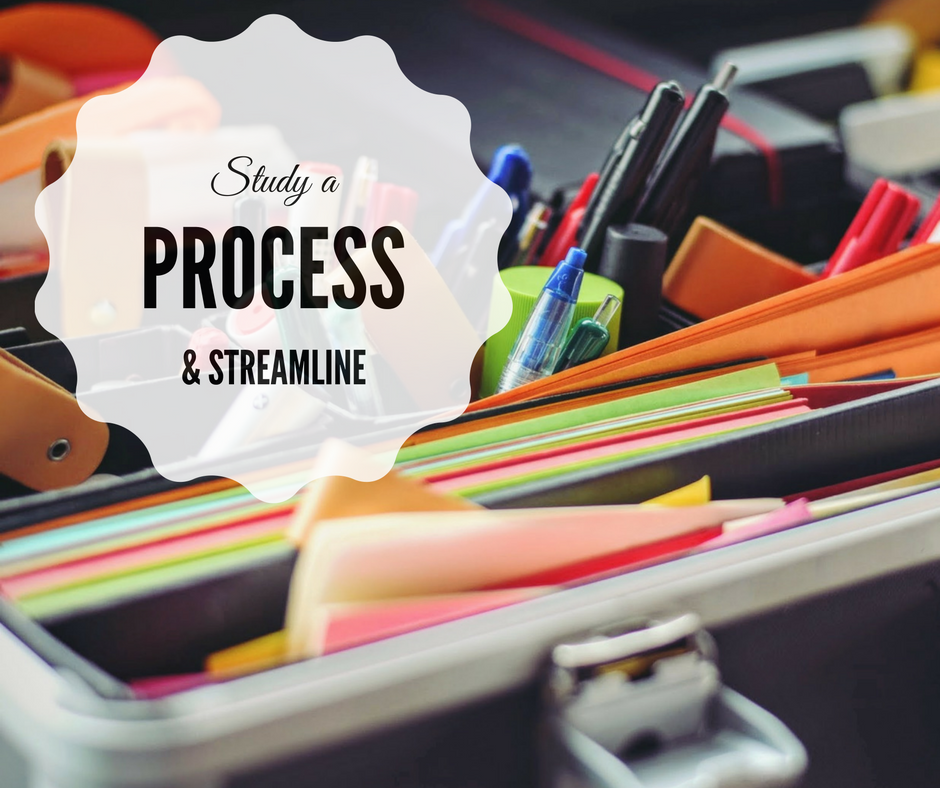
There aren’t many things in your life that you only do once. However, most of us don’t take the time to consider how we might streamline routine activities. For instance, how often do you:
- Sort the mail
- Do the laundry
- Go grocery shopping
- Pay bills
- Pack your bag for the next day’s activities
These activities are only the tip of the iceberg. Research shows that on average people spend one hour a day looking for stuff. Those little frustrations add up, and make the difference between a settled or scattered day.
We know there’s a better way, but we feel so overwhelmed by the magnitude of the little issues to solve, that we decide to ignore them. Or, we shrug our shoulders and figure this is just the way things are. We have no vision for how our days might go differently.
Now, imagine that you worked for Disneyland, and you were assigned to do a routine activity, such as help people board a ride, serve people lunch, or remove litter from the sidewalk. Would you do your job differently each time? Absolutely not. Not only would you have a system, you and your supervisor would have given thought to how you could not only make the task efficient and manageable, but you’d consider how you could add a little “magic.”
What if you used this approach in your daily life? What if you asked yourself: “How could I not only sort the mail more efficiently, but with a little magic?”
Try this:
- Choose one routine task you’d like to revise. Give yourself permission to choose one, even though you’re sure to have a number of options. Start with one, and use your success to move on to the next.
- Seek out an inspiring process to study. Many times, unusual connections can yield helpful results here. Rather than trying to find someone else who has the perfect mail-sorting routine, you might find inspiration in the way a Kindergarten teacher helps students organize take-home papers, or in the way a librarian sorts returned books.
- Identify the key steps of the process. If you’re a visual thinker, consider drawing a diagram.
- Consider why the process works. How might you apply the success of the process to your own task?
- Sketch or write up a template for your new process. Experiment and stay open to revision as you try out the new approach. Aim high. Don’t stop until you achieve inspiring results.
- Build on your success by working on a new task.
Writerly Play offers a framework for creative thinking. In each mental room, we tackle different thinking tasks. This activity is a tool for your Library, where we analyze resources, identify strategies for specific solutions and play with them until we make them our own.
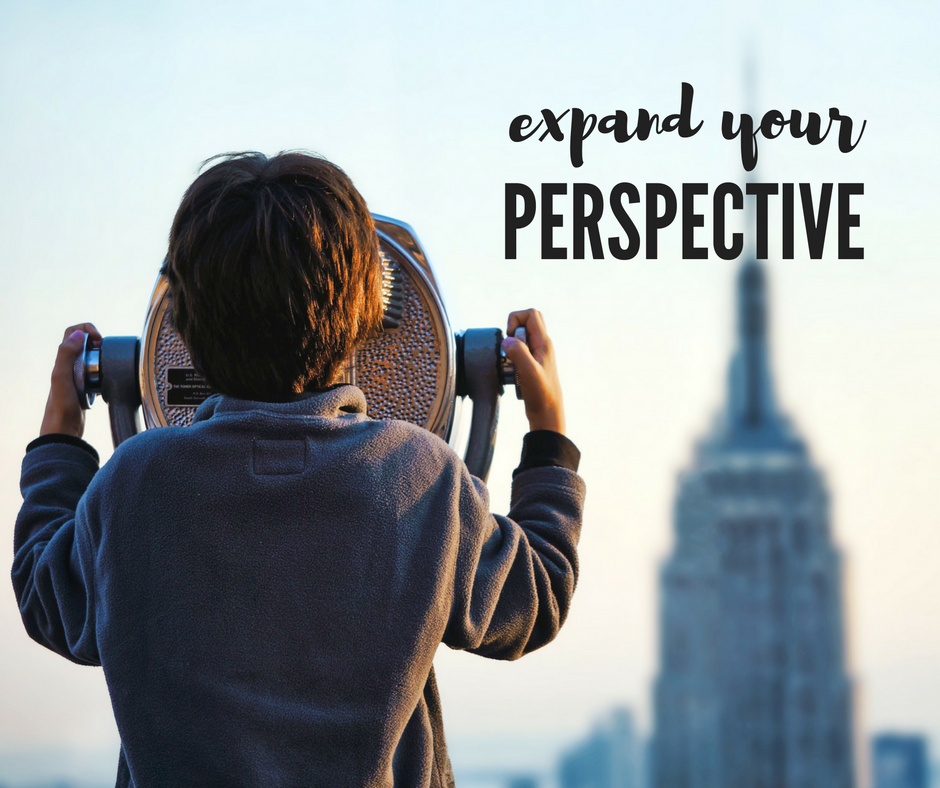
by Naomi | Nov 17, 2016 | Writerly Play Activities
When you need to move a heavy piece of furniture, you examine it from multiple angles to figure out the best strategy. In problem-solving, we’re more likely to identify helpful strategies when we explore multiple vantage points as well.
Try this:
- Identify the problem. If you need help clarifying what the problem is, exactly, try running your vague issue through this helpful clarification exercise.
- Start with a clean piece of paper, and list twenty questions that relate to the problem. If you come up with more than 20, excellent! Do push yourself to come up with at least 20, even if you stall out around 12. The questions that aren’t first to mind often end up being the most compelling or innovative.
- If you’re struggling for questions, spur yourself on with question starters such as “What if…” or “Why does…” or “How can…” or “Where can…” or “When might…”
- Once you have a list, go back and decide which you’d like to explore. You may feel the whole list is helpful, or it may be that one or two stand out.
- Make a plan for how you’ll address your list. Some next steps might be:
- free-write
- brainstorm in mind-map form
- create a collage
- research via google
- research via the library
- research via an expert (friend, colleague, blogger, podcaster)
Sometimes the most important step in problem solving is simply starting. Once you’re in motion, it’s much easier to ask, “What’s the next step?”
Writerly Play offers a framework for creative thinking. In each mental room, we tackle different thinking tasks. This activity is a tool for your Attic, where we collect life experiences, sort them and crystallize them into a question or set of questions to guide our creative exploration.
by Naomi | Nov 14, 2016 | Creative Life
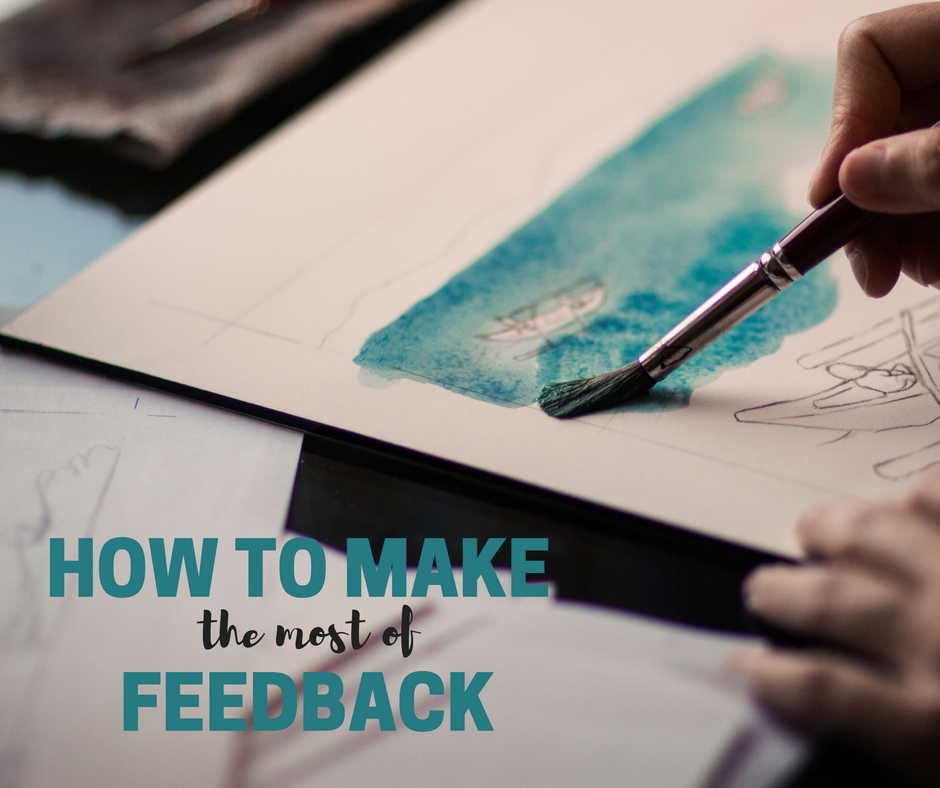
In order to make the most of feedback, you must be a strong translator.
Why?
Feedback doesn’t come gift-wrapped with a solution.
In fact, feedback generally points out holes, problems or weaknesses. As the creator, your job is to not panic, to hear past the comments, and to identify the true problem that’s being raised.
Take this scenario, for instance:
Meg signs up for a critique with an editor for the first ten pages of her manuscript. The editor has read the pages and sits down with Meg to discuss them.
Editor: I love the premise in this story, and in particular, am drawn to your main character, Frankie.
Meg: Thank you!
Editor: I don’t think the dog works, though. He’s sweet, but I don’t know. I think I’d rather focus on Frankie.
Meg: Ummm… (she’s completely baffled, because the dog is essential to the entire plot)
Editor: (nodding, warming up to her idea) Yep. I think if you took the dog out, we’d connect with Frankie more quickly.
As the conversation wraps up, Meg tries to hear the rest of what the editor says, but she’s stumped. All she can think is that her story doesn’t work. If she takes out the dog, the story doesn’t have a plot. So, maybe she should just start over with a new idea. This kind of scenario happens far too often.
As creators, we can be too literal about the feedback we receive.
We take a comment such as “I don’t think the dog works,” to mean that we need to remove the dog. If we take a look at the conversation though, looking at it as a translator might, we can see that something deeper is happening. The editor has pointed out that she likes Frankie, and that the dog is a distraction. She has said, “I’d rather focus on Frankie” and “If you took the dog out, we’d connect with Frankie more quickly.” Maybe the problem isn’t the dog, exactly, but the way the dog is pulling the reader’s focus in the first ten pages. Maybe the dog needs to be a little less compelling. Maybe we need some time to get to know Frankie before we meet this super-star dog.
When we receive feedback, we must identify the underlying question.
In this case, the question “how can I remove the dog” leads to a complete unraveling of the plot. But the question, “how can I tone down the dog in the first few pages so the reader can focus on Frankie,” is productive and absolutely solvable.
When your ego is on the line, it’s easy to spiral into a tailspin. We freak out, and jump to worst-case scenarios. Our work has a flaw, and we have no idea how to solve it. We should toss it out and start over. Or, worse, we should stop believing we can create at all. Who are we to think we’re a (fill in the blank).
Becoming a translator takes practice. The same is true for learning how to translate feedback. The good news is that there are simple steps to the process. We can practice these steps ahead of time when our egos are not on the line. That way, when we are ready to seek out feedback, we can make the most of it.
Here are five steps for making the most of feedback.
- Write down what the person says. Write down the good, the bad, and the in-between. Try to capture as many words as you can.
- Ask clarifying questions if you don’t understand something that was said, but avoid defending your work. You need time to process what has been said, and the person offering feedback doesn’t expect an answer on the spot. Thank the person for his or her time and insight.
- Find a quiet space and read over your notes. Don’t trust your memory. You’ll over-emphasize the drama. The key to translation is reviewing everything that was said.
- Look for clues as to the reason why certain advice was given. You were told to “get rid of the dog,” but what were the supporting reasons? What issue do those reasons point out?
- Frame a question that highlights the issue to solve, and then brainstorm workable solutions that deal with the heart of the problem.
What kinds of projects are you working on? How might feedback help you? What thinking challenges can you give yourself to practice these five steps? Build up your translation skills through a few low-risk practice sessions, and then try asking for real feedback to see how you do.
Remember, learning to be a translator is a skill. Expect a learning curve. Motivate yourself to push through the tough parts by focusing the benefits. If you can alchemize feedback into useful revision, you can take your work to the next level. Challenge yourself. The results are worth the effort.
by Naomi | Nov 10, 2016 | Creative Life
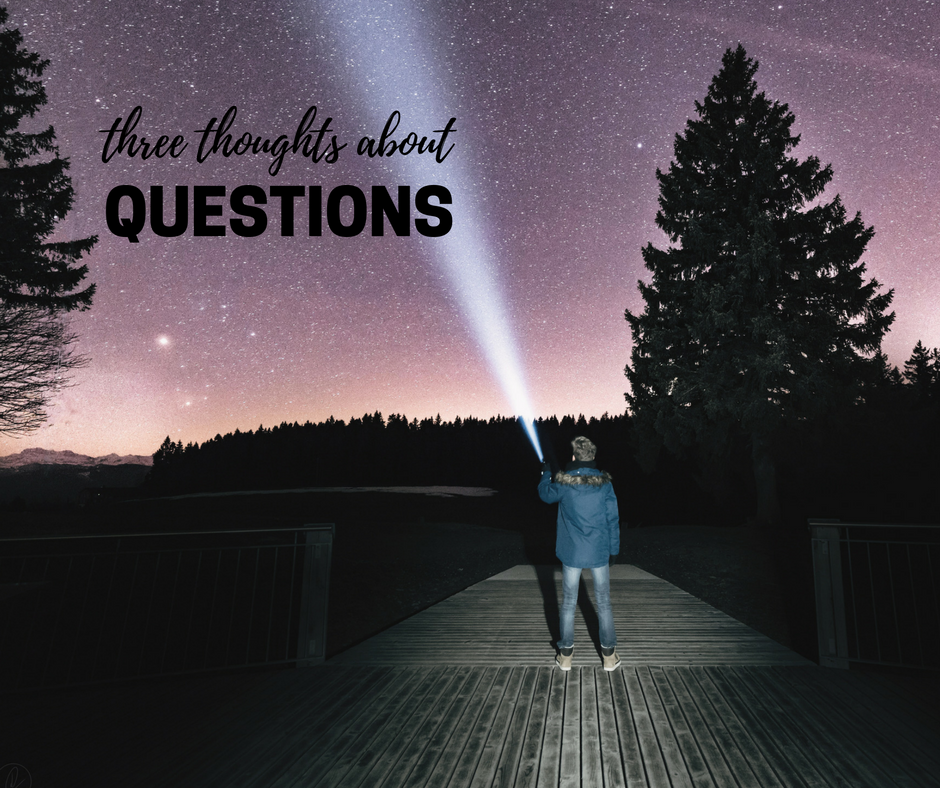
Creativity often shows up at the intersection of various thoughts. Here are three to ponder … what do they spark for you?
“It’s not a silly question if you can’t answer it.”
― Jostein Gaarder, Sophie’s World
“Have patience with everything that remains unsolved in your heart. Try to love the questions themselves, like locked rooms and like books written in a foreign language. Do not now look for the answers. They cannot now be given to you because you could not live them. It is a question of experiencing everything. At present you need to live the question. Perhaps you will gradually, without even noticing it, find yourself experiencing the answer, some distant day.”
― Rainer Maria Rilke, Letters to a Young Poet
“Which would you rather be if you had the choice–divinely beautiful or dazzlingly clever or angelically good?”
― L.M. Montgomery, Anne of Green Gables
by Naomi | Nov 7, 2016 | Creative Life
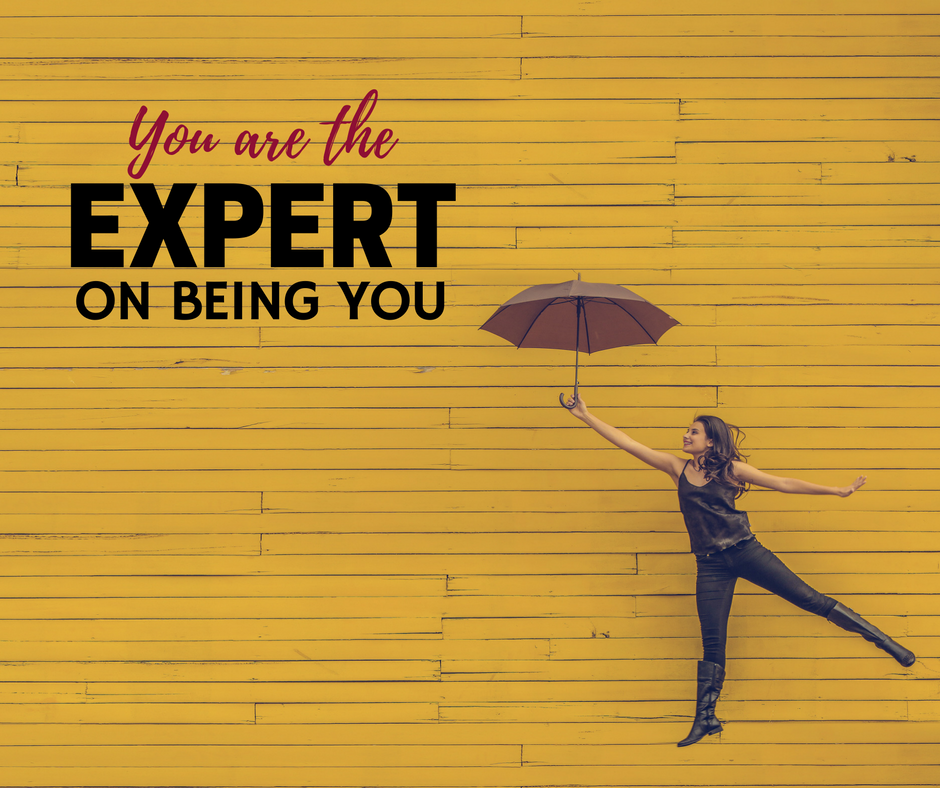
How often do you look up from the various fires you’re fighting and wonder: am I doing life right?
With life moving at a million miles an hour, it’s not surprising that we yearn for a different approach. In his book, Procrastinate on Purpose, Rory Vader describes our plight this way: We’re “juggling hamsters, running as fast as we can on our wheels.” We’re moving faster, juggling our priorities faster, but the only way forward is faster, faster, faster … until we crash.
Even though we say we can’t have it all, most of us secretly hope the rules are different for us.
We’re going to find the secret recipe. Eventually, we’ll stumble across the magic wand. This deeply held belief (which we often don’t admit to ourselves) causes us to act in irrational ways. We seek out the stories of others who “made it.” We ask for advice, read self-help books, are addicted to the blog posts that promise Three Simple Steps for … or How You Can “x” in Half the Time.
We spend so much time doubling back, looking for a shortcut, that we never make progress toward our goals. We keep trying new paths rather than moving forward on the path we’re on. Why?
We think someone else has the answer.
Is it possible for someone else to know how to be YOU better than you do? Sure, coaches and mentors are essential to our growth. Exploring opportunities, investing in development and being teachable are all important. However, in the end, the person who knows the right next step for you to take is … you’ve got it. You.
You are the singular mix of your innate gifts, your developed skills and your life experience. There is literally no one else like you. So, why do we try to force our lives into a pattern that is uniquely suited to someone else? Because … we think someone else has the answer.
If YOU have the answers, and yet you’re still confused, what should you do? Let’s say you are someone’s mentor. Your mentee sits down across from you to explain their current situation and their goals. What would you do?
Probably you would:
- Listen carefully.
- Reflect what they’ve said back to them, clarifying until you’re both sure that you’ve boiled the situation and goal down into a clear statement.
- Ask questions about what’s working now and what’s not.
- Consider your own life experience and share perspective that might shed light.
- Provide resources if you have them, or research new resources if you don’t.
- With clarity, perspective, and new information, you and your mentee would create an action plan.
When you move into the action plan part of the process, it is the mentor’s job to listen, to provide feedback, and ultimately, to leave the decision making in the hands of the mentee. If you have a mentor who takes the opposite stance, shoving their plan onto you, I’d highly recommend that you fire that mentor.
If you don’t have a mentor right now, though, take a look at those six steps again.
What if you gave yourself permission to be your own mentor?
What if you:
- Journaled or talked the problem out into an audio file, and then re-read or listened.
- Pulled out the key points and clarified the situation and goal into a clear statement.
- Brainstormed what’s working now and what’s not.
- Considered your life experience with YOU. When have you had success? What might you do that’s similar in this situation?
- Sought resources to fill your knowledge gaps.
- With clarity, perspective, and new information, created an action plan.
Doable, no?
Even if you do have a mentor, (and I strongly believe everyone should have at least one mentor) the key here is understanding where responsibility lies. Your mentor is there to advise you. You are the one who is responsible for the choices. That’s important, so it bears repeating.
You are responsible for your choices.
When you are ready to start making true progress, you must make this small but essential mental shift. You’re seeking out guidance not because of your weakness, but because of your strength. You are not the intern in your life. You are the CEO. Both the CEO and the intern have advisors, but interns and CEO’s relate and react to their advisors in significantly different ways.
Give yourself permission to be the leader in your own life. Be a strong leader, the kind of leader who listens to guidance, considers the options, confidently makes the best decision she can, and then takes responsibility for the results. Be the kind of leader who learns from the outcome, be it joyful or disappointing, and who adds that life experience to her expertise.
In what areas of your life have you accepted your CEO role? Where are you stubbornly clinging to your intern status? This mindset shift is simply a decision. You don’t need three steps to make it. You can make it, actually, before you close this window and move on with your day. In fact, this mindset shift might actually be that magic wand you’ve been looking for all along.
Choose boldly. I’ll be here, cheering you on.
by Naomi | Nov 3, 2016 | Creative Life
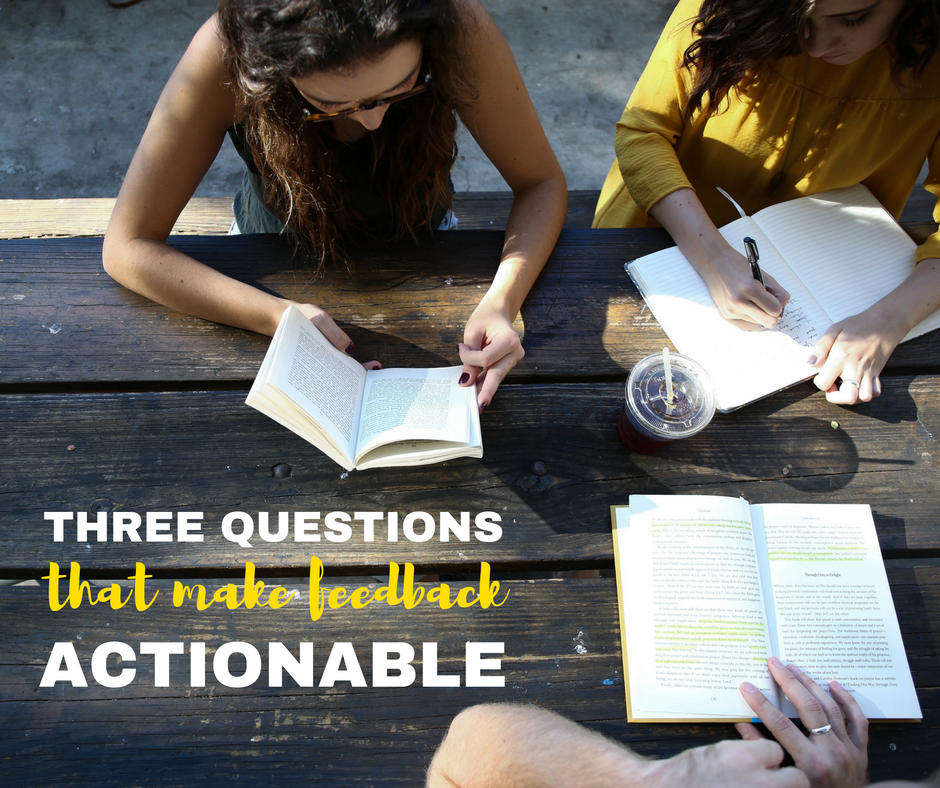
When you ask a friend or advisor for feedback, you’re both up against a number of challenges.
Your advisor:
- Doesn’t know all the ideas you’ve tried and tossed out
- Hasn’t researched, thought, and tinkered with this question or creation for as many hours as you have
- (Hopefully) Wants to give helpful feedback to move you forward without discouraging you
You:
- Have invested significant time and want that time to add up to successful results
- Have made the project as strong as possible, given your current perspective and skill set
- (Hopefully) Are passionate about your project, and therefore, you have skin in the game
Given the challenges, does it make sense for you to seek feedback at all?
You and your advisor are knowingly putting yourselves into a situation filled with the potential for misunderstanding and conflict. Why risk it?
Because you:
- Have invested significant time and need to understand how others might react to your creation once you release it into the world
- Have blind spots because of your current perspective and skill set, which others can see more clearly than you can
- Care about your project’s success, and therefore, are willing to tackle your ego, engage with honest feedback, and exercise your resilience through the revision process
Whether you’re writing a novel, developing an app, or designing a lesson plan, your creative process will yield stronger results if you seek feedback at key points along the way. Often when we seek feedback, we want to give our advisors room. So, we ask a wide-open question along the lines of, “What do you think?” However, when we’re on the receiving end of such a question, we immediately see the problem. The most likely answer to “What do you think?” in an emotionally fraught situation is, “Ummm…”
So, what might you ask instead?
Give your advisor an opportunity to read the section, play with the app, or review your lesson plan. Then, give these questions a try:
1. What do you know?
Answers to this question confirm how successfully you’ve communicated. Will your reader or user be able to navigate without you sitting beside him and explaining? For a lesson plan, try adapting this question to: What will a student know after this lesson? For other creative situations, adaptation might also be required. One strong substitute for this question in visual and musical arts can be, “What do you feel?”
2. What do you think you know?
Answers to this question provide insight about what your work might infer. Consider whether these nuances are desirable––and how you can play them up or remove them. Make sure that any information that you mean to make clear doesn’t show up in this more fuzzy category. Watch for opportunities, here, too. Sometimes an answer to this question will reveal a thematic layer or new possibility that opens up new depth in your work.
3. What do you want to know?
Answers to this question reveal the questions your work evokes. Sometimes these questions reveal aspects of the project that have not been fully realized. Other times, these questions confirm the desired impact of your work, or provide you with ideas for follow-up projects.
Of course, some feedback sessions call for a different set of questions. However, in many situations, this set of questions structures a productive conversation that allows for honest feedback. Your advisor will confidently be able to help you, and you will be able to absorb the feedback without becoming defensive.
Why seek feedback?
The value in seeking feedback from an advisor isn’t in having her fix the problems for you. In fact, given the time invested, even if your advisor is more experienced than you in general, YOU are the expert on your specific project. What you want from your advisor is his outside perspective, which is often helpfully informed. With that perspective, your advisor can help you identify problems. Then, you can set about resolving the problems through brainstorming, research, and iteration.
What project are you working on that would benefit from outside perspective? Who might you ask to review your work and answer these three questions? Try it out, offer your feedback in exchange, and see how your work develops.
by Naomi | Oct 27, 2016 | Creative Life
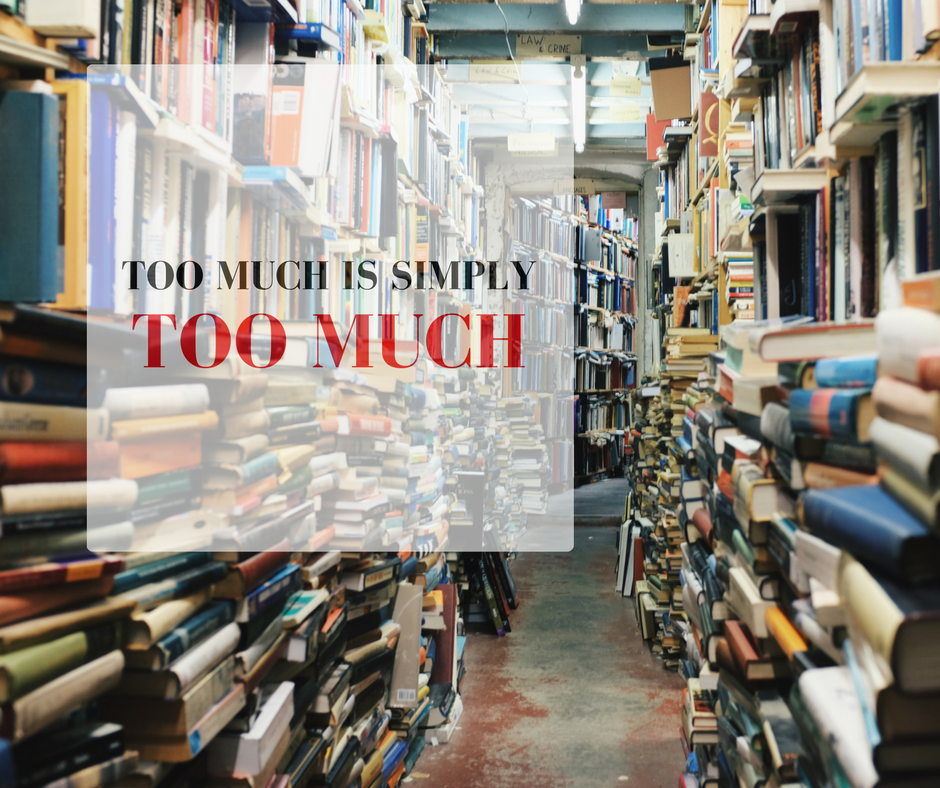
“distringit librorum multitudo” (the abundance of books is distraction)
– Seneca
Even though he didn’t live in our age of information overload, Seneca had the foresight to see that too much is simply too much.
Recently, I realized I couldn’t remember the last five books I’d read, let alone any lessons I’d gleaned from them. With focused effort, I puzzled out which books I’d read. With further thought, I remembered the general plots or a couple key points. Not much to show for my investment of time.
Consumption without reflection is like peppering a steel wall with jelly beans.
Nothing sticks.
Everything clatters.
It’s a lot of noise and leaves behind a mess.
It’s worse than a zero-sum game.
Why? First, we spend our most valuable resource: time. We read books, listen to podcasts, and meet with advisors in order to learn and grow. In theory, spending time on learning and growth is completely worthwhile. But when we rush off to the next thing without capturing our thoughts or thinking about how to apply what we’ve learned, the growth opportunity slips away. Worse, by reading the book, listening to the podcast or meeting with the advisor, we create an internal tension between what we’re doing now and what we want to do or be in the future. Without definition or action steps, that tension builds up, making us more and more uncomfortable.
I’m not who I’m supposed to be.
I’m doing it all wrong.
Why should I even try when I’m so far behind?
Discouragement is a powerful foe.
The best way to push back against discouragement is to slow down. When you slow down, you allow yourself time to reflect. You diminish that inner tension because when you’ve decided how to apply your learning, you can take action. The action shrinks the distance between where you are and where you hope to be. When you slow down, you save time.
However, slowing down is counter-cultural.
Very. Just listen to the small-talk at any meet-and-greet, and you’ll hear fifty people explain how busy they are. Busyness, despite the fact that we all claim to resent it, is a badge of honor. We all appear to have an inner gremlin jumping up and down inside our brains shouting, “Go, go, go!” The gremlin is hard to ignore. And yet, if we want to push back against discouragement, if we want to feel more grounded, if we want to truly learn and grow, we need to build a habit of reflection.
Gretchen Rubin, of Happiness Project fame, suggests a variety of strategies to make good habits possible. One of those strategies is the strategy of convenience.
How can you make reflection convenient?
- Choose a starting place. Don’t try to become a reflection aficionado overnight.
- Designate a collection tool. Once you’ve chosen one kind of reflection to add to your routine, consider how and where you’d like to capture your thoughts. A notebook? A digital tool? Consider convenience both in the moment of reflection and later when you review your notes.
- Create a template. Pre-thinking about the questions you’d like to answer makes the reflection process much more efficient. Also, a standard format for responses makes reviewing the set as a whole more meaningful.
- A template may be a set of three questions you write in the front of your paper notebook, and that you answer each time you reflect.
- A template may be a PDF that you load as a custom page into a digital app such as Noteshelf.
- A template may be an outline that you draft, and then copy/paste in an app such as Evernote or Google Drive.
Once you get one reflection habit underway, you can turn to another area of your life where reflection may help you grow. If you build a system that is easily expandable, soon, you’ll find that reflection has become a way of life. You will feel a greater sense of ease as you take action on the goals that are important to you. The time you invest in learning will yield more significant results. By slowing down, you not only save time, but allow each experience to be more rich, valuable and meaningful.
I use a template for end-of-the day reflection. It includes a place to record ideas from the day, story moments, “gold stars” (moments I’m proud of) and “demerits” (moments I’d do over if I could.) I particularly like using the playful “gold stars” and “demerits” as a process of noting what’s going well and what I’m learning. Demerits, particularly, help me to let go of the “I wish I had …” thoughts that can get in my way.
If you’d like to download my template and try it out yourself, download it here.. I recommend loading this page into the Noteshelf app as a custom page, and dedicating a digital notebook to your reflection process. However, you can, of course, use or adapt the template however you like!
by Naomi | Oct 24, 2016 | Creative Life

My wish? To be mentored by Madeleine L’Engle.
In my twenties, I wrote a letter to Madeleine L’Engle.
I knew the chances of hearing back from her were very low. She was busy and surely couldn’t respond personally to every reader. Knowing these truths didn’t stop me from harboring a fantasy that somehow, in some way, my letter would spark a connection between the two of us. In the end, I did hear back from Madeleine. Her assistant wrote me a sweet note to say that Madeleine had been touched by my letter and wished me all the best with my writing.
I realized that I had received more than most people do. And still, I couldn’t help feeling slightly tragic about the situation. Tragic enough, actually, that I spent time unpacking the issue. What did I want? Why did I want it? Was there a way I could achieve that goal even if I couldn’t spend time with Madeleine herself?
A quick side note: I’ve written before about the superpowers that belong to writers. The scenario I just described is a prime example. Writers know in their bones that what a character wants isn’t always what she ends up achieving. Since this truth applies to characters, it’s not hard to see how it applies to our real lives, too.
In any case, as I unpacked my wish, here’s what I discovered.
1. Mentorship is the art of asking resonant questions.
While mentors often have life experiences we seek, mentorship isn’t about being given a step-by-step guide. Someone else’s story is unique and particular to their own life circumstances. However, their stories offer connection points that lead us to questions of our own. The best mentors open discussions and then listen as we explore the resulting questions and possible answers. Through asking questions and seeking answers, we unlock the answers and that next-step clarity that we seek.
2. Often, we’re already being mentored without realizing it.
Why did I want Madeleine L’Engle to mentor me? Because she already had. Through her nonfiction and fiction, she had already led me to deep questions that sparked significant growth. She had unlocked next steps for me. What I wanted was more of that experience. It’s not only writers who can be mentors. Visual artists mentor us through their artworks and their artist statements and stories. Musicians mentor us through their music, their liner notes, and their interviews on the process. The same is true for dancers, teachers, chefs, gardeners … any creative person whose work results in something we can observe, examine and explore.
3. In order to make use of the mentorship at our fingertips, we need to think in specifics.
As an enthusiastic reader of Madeleine L’Engle, I gained a certain level of mentorship. To dive deep, I thought I needed to meet her in person. Had she been sitting with me in person, however, I’m sure she would have turned the focus back to me. She would have asked me questions, pushed me to reflect, and invited me to make discoveries. I wondered: what if I read her work with my specific questions in mind? Might I stumble across clues that would lead me to deeper discoveries––in writing craft, in mindset, in creativity? It turned out that by bringing specific intention to the reading process, I entered into an entirely new level of mentorship with Madeleine L’Engle. The amazing thing was that not only could I have her as my mentor, but any other author who I also admired. I had a new skill set that allowed me to learn from the masters.
As another side note, it’s important to point out that I continue to work monthly with an actual living, breathing mentor. An outside perspective provides insight into our blind spots, encouragement and accountability. Finding ways to mentor with the masters doesn’t replace our need for authentic connection with advisors. However, once you learn the skills needed to mentor with the masters, libraries, museums and even Netflix turn into treasure troves of learning opportunities.
What skills are needed?
- Observe a poem, painting or film to identify what is working.
- Analyze specifically why and how that element of craft works.
- Experiment with similar strategies in your own work.
- Riff on the strategies until you make them your own.
And don’t forget that you can replace “poem, painting or film” in the above list with “creative life” or any other focus that appeals to you with regard to one of your heroes.
Here are your action steps:
- Choose a hero-mentor and decide what you’d like to learn.
- Reach out to someone you know and respect. Ask them if they’d meet with you regularly as you pursue your learning goals.
- Give them permission to challenge you, and commit to listening fully without defending yourself. Remember, growth takes courage and determination.
- Get started!
by Naomi | Oct 20, 2016 | Tools & Apps
My playlist is an eclectic collection of tools that help me approach my work as play. My hope is that they’ll do the same for you.
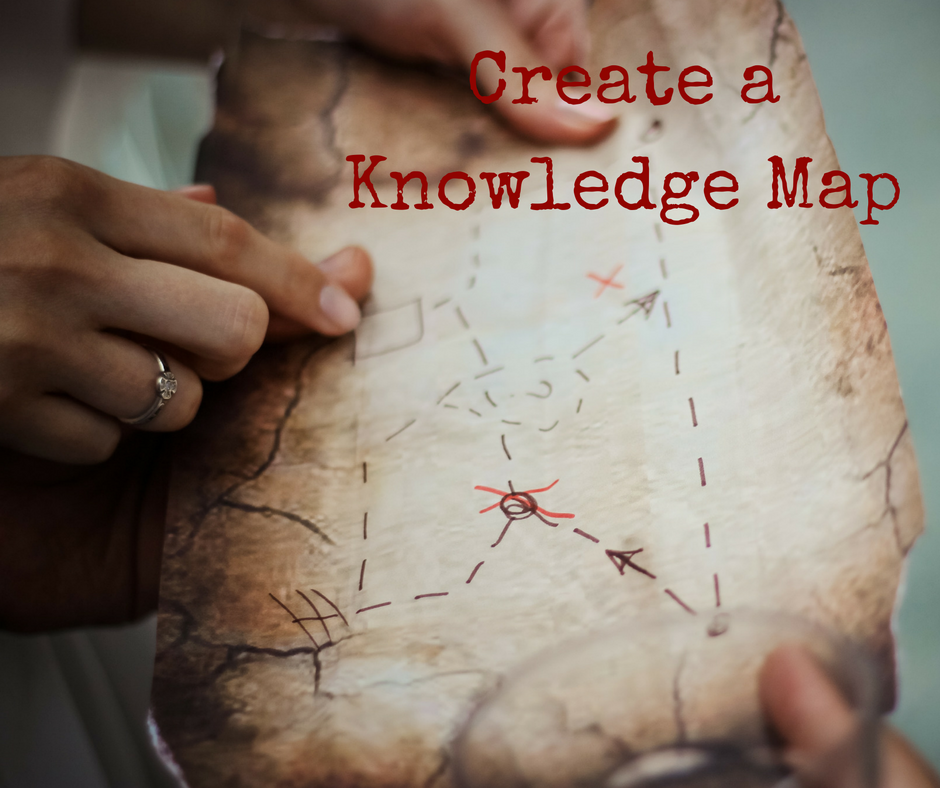
Object: Creating a focused learning plan
What Didn’t Work: Allowing the content that others post, podcast or promote to shape my learning on their schedule, being constantly overwhelmed and distracted, not knowing where to start.
My Aha! Moment:
You know how it feels
when you see your to-do list
and its filled with tasks
you don’t know how to do
your heart races
and your mind fizzles
and you feel like a rock climber
scrambling
with no hand-holds
your feet slip-sliding
Why am I so behind?
I know I need to learn but what
do I type into google?
Does everyone else already know …
everything?
You remember
How simple it seemed
In school
Your teacher shaped your learning
All you had to do was show up
The day planned in sturdy blocks
Topics listed in clean lines on the board
Here’s the next step
And the next
Sometimes you were bored
But if you were overwhelmed
You could raise your hand
I’m lost.
Where do I start?
Where do I start?
If I only study what I already know
What about the things I don’t know?
What if I’m missing that one
magic wand
shortcut?
If I raise my antenna
to take it all in
I won’t miss anything.
But what if I actually miss everything?
What if the noise
drowns out what actually matters?
Thus: The Knowledge Map
- You know more than you think you know about where to start learning.
- Think of your growth like a jigsaw puzzle. If you obsess on one middle piece, you might be stuck for years.
- Instead, you start with the edges, and look for what fits. What you’re doing is giving yourself a starting place.
- A knowledge map pins down the “you are here,” arrow and constructs a learning plan from that location.
How to Play:
- Brainstorm the general categories involved in this area of knowledge. For instance, in marketing, your areas might be social media, email marketing, content development. In writing, your areas might be character, plot, setting, theme.
- Are any of your subcategories of others? Sort accordingly until you have master categories and subcategories.
- Add any other key subcategories that come to mind. The more intricately you know a topic, the more subcategories that are likely relevant to you.
- Put your categories on a map. Tap into your intuitive thinking by assigning each category an image. Draw them or collage them––have fun with it. Perhaps “dialogue” is a well on the farm labeled “character.”
- Use two post-its per category and subcategory. One post-it is for knowledge or mastery. Where is your firm footing when it comes to this topic? The other post-it is for what you wonder. What would you like to know?
- Map the entire area of knowledge, and then step back to take a look. It may be that some categories are stage one, others are stage two, and some are stage three. Alternatively, you may have stage one, two and three within each category.
- Give your stages names that clearly describe their aims. For instance, your stage names may include: build foundational skills, experiment with possibilities, dive deep into specifics.
- Sort your questions into these stages.
- Figure out a plan for how to start stage one. Seek out resources specifically focused in this area.
Player’s Notes:
- Keep the process playful. Don’t think in terms of right and wrong. The point is to figure out where you are currently, and based on that location, where your energy will be best focused next.
- Keep the process loose. As you head into stage one, you’ll encounter new information that may change the categories or timeline. Give yourself permission to revise your plan. You’ll know if you’re sabatoging yourself and derailing the process, or if a change is genuinely needed.
- Keep the process rule-free. Once you know a topic fits in stage three, you won’t be so overwhelmed when you encounter it in real life. If you find a podcast about stage three that you’d like to listen to while you’re in stage one, go for it! Your map isn’t a set of rules. It’s a navigation tool.
Our world is changing at an extraordinary rate. Lifelong learning is no longer optional. If we want to work, play, connect, and make a difference in the world, we need to engage with new ideas, new technologies, and new skills. It’s true that we need to stretch ourselves. True growth, however, takes time. When we choose to go deep, to learn authentically, and to build bridges from current knowledge to new concepts, we may feel like we’re going to be left behind. However, in the end, much less time is lost skittering from idea to idea, only to learn nothing. Take the time you need. Make choices, however difficult they may be. See how life becomes more settled and richer because of the decisions you have made.
by Naomi | Oct 17, 2016 | Creative Life
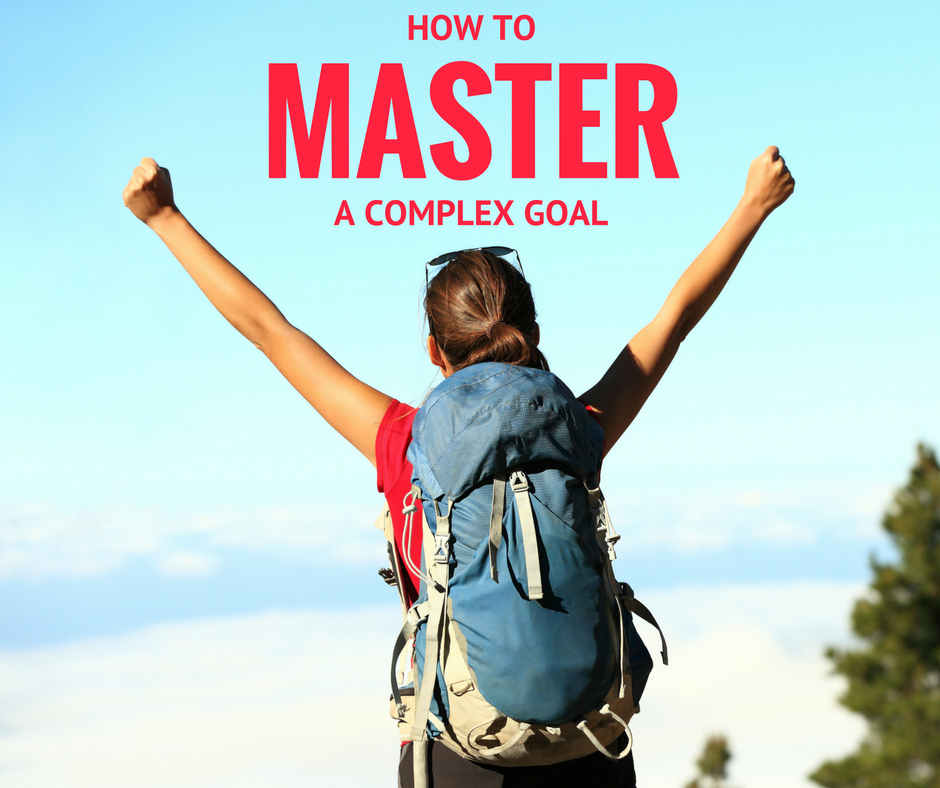
Do you have enormous goals on your mental or physical to-do list such as:
- Learn how to podcast
- Write a novel
- Run a half-marathon
- Learn to play the guitar
Projects such as these beg the question: Where should I start?
When learning to draw, the first task is to stop one’s mind from translating the concept “apple” into a symbol. We must see the real apple with all its curves and irregularities in order to accurately draw it.
In my experience, the same is true with goals. Our brains, amazing tools that they are, simplify complex projects into impossible-to-tackle placeholders. While we can pick up a guitar and start plucking strings, for most of us, the time spent isn’t likely to result in learning to play guitar.
Why?
- We haven’t clarified what we mean by “learn to play the guitar.”
- We don’t know where to start.
- We quickly lose heart when we can’t track or measure our progress.
Let’s turn these challenges into proactive steps, and see where they lead.
Clarify the Goal
In the Attic, we explore the heart of a project. In the Studio, we improvise to bring new possibilities into the world. However, the Workshop provides us with tools to give our loose idea-material structure. In the Workshop, one asks: What do I know? What do I need to know? What are the pieces of this project or this skill? Where might I start?
One major task of the Workshop is to determine the scope of our project. It’s one thing to learn to front a rock band, and an entirely other one to learn to strum campfire songs. When we clarify our project, we determine our focus. With focus, we can clearly see which actions will be most effective to help us reach our goal.
One of the best strategies for clarifying your project is to take a quiet moment, close your eyes, and picture success in detail.
- What will the scene look like on the day you achieve this goal?
- What will you see, hear, feel?
- What will you be physically doing?
Once you have a clear picture, capture the highlights on paper. This scene becomes your destination point, and helps you determine which actions are relevant, and which are not.
Determine Where to Start
While we want our destination to be a firm location, with creative projects especially, the path to the goal can vary widely. Consider an open space with many trails that end at a lake. There may be four or five possible starting points, and various trails with scenic points along the way.
In the end, our experience of “hiking to the lake” is singular. No matter how much we plan a hike or a creative project, something is bound to surprise us along the way. Ideally, we want to create a plan with enough structure to keep us moving toward our ultimate goal, while leaving room for surprise.
Ask Yourself:
- Where are my current circumstances with regard to this project?
- What do I hope to learn along the way?
- How much time and stamina do I have?
Track and Measure Progress Toward Your Goal
Each year when Society of Young Inklings begins the Inklings Book editorial process, we ask our mentors to choose a specific revision focus. For instance, the mentor and youth writer may focus on developing character through dialogue.
By focusing on dialogue, the youth writer sees improvement that can be specifically described. “My dialogue used to be x, and now it is y.” This clear growth builds confidence. While revising with a specific focus, writers often identify other weaknesses and fix them without becoming sidetracked. Contrast this approach with a general “I’ll fix everything that’s wrong” approach. You can see how rabbit trails and discouragement easily set in.
In order to track and measure your progress, be specific about what you’re tracking. Ask yourself:
- What external milestones are essential along the way?
Here, consider the achievements between start and finish, such as character profiles, a plot, a first draft, a critique session, a revision, etc.
- What internal milestones are essential along the way?
Here, refer to the question: What do I want to learn along the way? Break that goal into measurable steps. If you want to learn about developing believable characters, what is involved?
First Steps
If you do have a giant project on your to-do list, depending on your style, your first step may be to head into the Attic to figure out why this project is so important to you. Alternatively, your first step may be to hit the Studio to play around and find your general direction.
Somewhere, though, early on in the process, the Workshop becomes a necessary step. For most of us, the purpose of major projects such as writing a novel or running a half-marathon is to challenge ourselves to grow. Growth will happen naturally whether we make a plan or not, but we’re more likely to see the results we hope for if we understand what those results will look like—both externally and internally.
I look forward to hearing about your projects and successes! Make sure to share so we can cheer you on.

